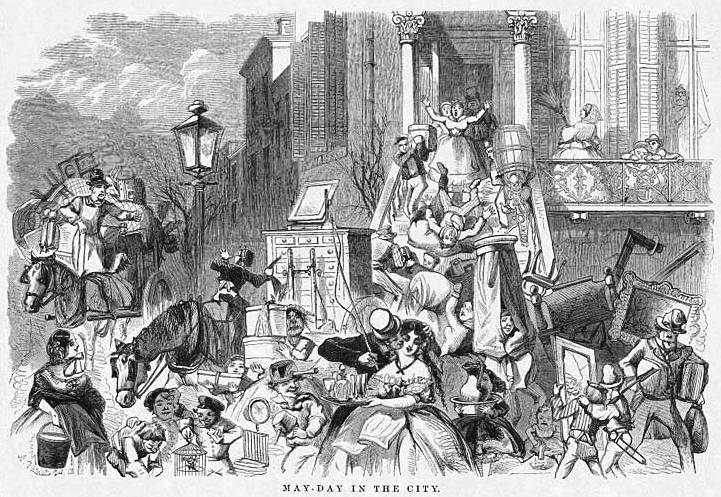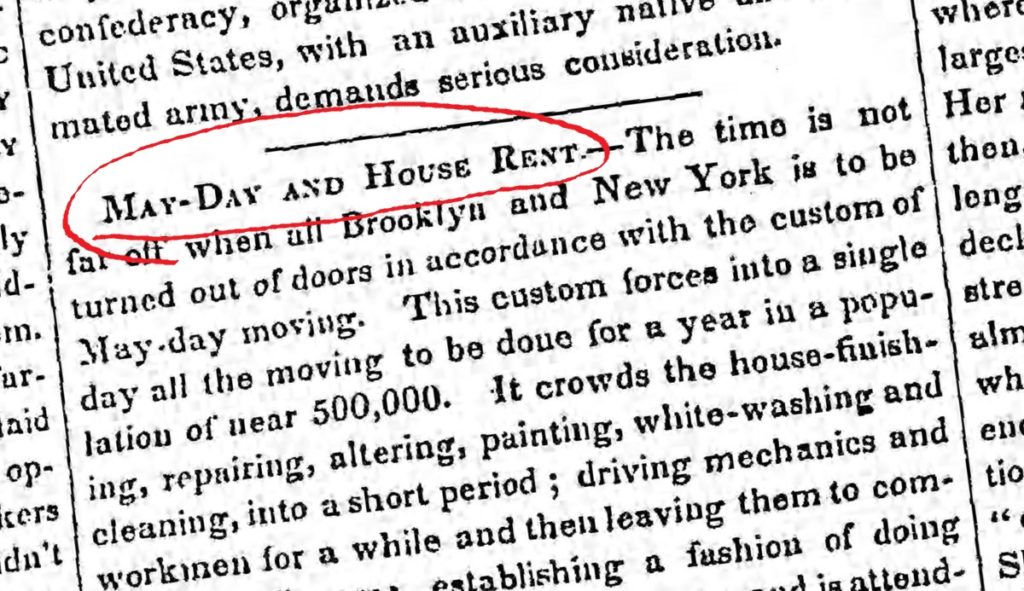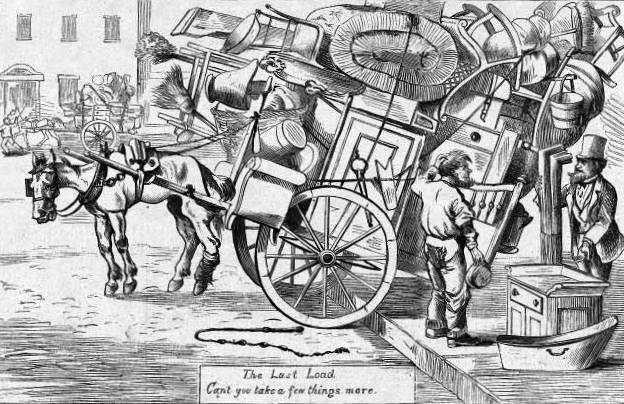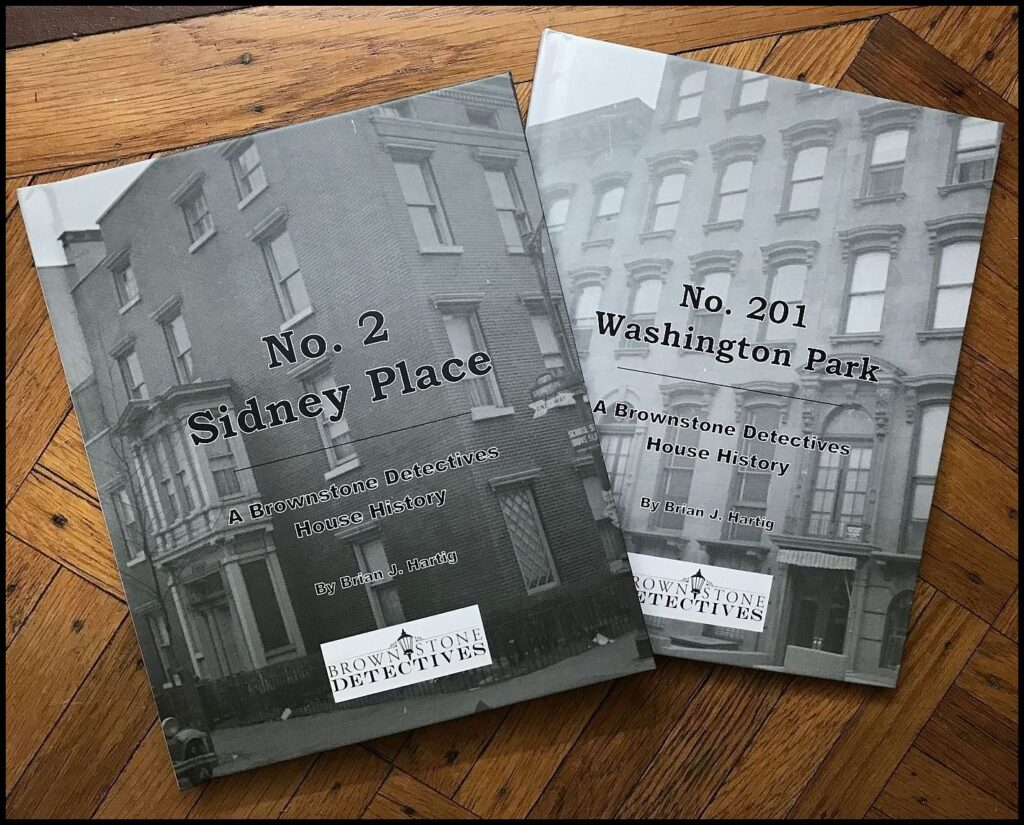WHEN MAY DAY WAS MOVING DAY (1847)

Brownstone Detectives investigates the history of our clients’ homes.
The story you are about to read was composed from research conducted in the course of one of those investigations.
Do you know the history of YOUR house?
********************************************************************************************************************************
Imagine, as a New York renter, waiting with dread every year for May 1 to arrive. It meant that you, like many untold thousands of other renters in the city, had to move. Now, consider the competition for hiring moving vans and movers – and the surge pricing associated with every aspect of it.
This was exactly what took place in New York City on the first day of May starting in the early 19th century and lasting for about 120 years through WWII. While the annual event may have originated as a custom, the tradition was actually couched in law in 1820 when an act of the New York State legislature was passed into law, mandating that all housing contracts were valid unto the first of May (unless the day fell on a Sunday, in which case the deadline was May 2).
In other words, the landlord basically had his tenants by the law. And it rarely ended well for the tenants.

According to the New York Times, February 1, sometimes known as “Rent Day,” brought landlords togive notice to their tenants what the new rent would be after the end of the quarter, and the tenants would spend good-weather days in the early spring searching for new houses and the best deals, and on the first of May all leases in the city expired simultaneously at 9:00 am, causing thousands of people to change their residences, all at the same time.
According to the book Gotham, “In 1799, an observer commented that New Yorkers ‘are seized on the first of May, by a sort of madness, that will not let them rest till they have changed their dwelling.'”
“The time is not far off when all Brooklyn and New York is to be turned out of doors in accordance with the custom of May-day moving,” lamented the Brooklyn Daily Eagle in January of 1847. “This custom forces into a single day all the moving to be done for a year in a population of near 500,000. It crowds the house-finishing, repairing, altering, painting, white-washing and cleaning, into a short period; driving mechanics and workmen for a while and then leaving them to comparative idleness; establishing a fashion of doing work in a slight and hurried manner; and is attended with all the loss and waste that necessarily belong to such a state of things.

“As houses are all hired from the same day, the quarter days throughout the whole city all come together,” the Eagle continued. “As quarter day approaches, money becomes scarce, for everyone is curtailing his payments to meet the general demand; business is seriously obstructed until quarter-day is past, and then things are permitted to proceed until the next one approaches. If houses were hired from different times, so that rent days came promiscuously throughput the year, no general pressure would result from this cause. It unsettles people’s minds as the period for hiring comes. It operates like an epidemic; and landlord and tenant seem about equally anxious to try the effect for a change. Whole neighborhoods are broken up. People do no know where to look each other; and a large portion of the year is often spent in restoring the order disturbed by this continual moving.”
The Times further noted that by 1856, some erosion of the strict adherence to the custom of Moving Day was noted, as some people moved a few days before or after the traditional day, creating, in effect, a “moving week”. Then, once the economic depression of 1873 ended, as a result more housing was constructed which dropped the price of housing. Subsequently, people had less need to move as often.
According to the book, Moving Day, at the height of Moving Day in the early 20th century, it was estimated that a million people in the city all changed their residences at the same time. Resistance to Moving Day, though, was strong – and growing stronger -in the 1920s and 1930s. It took the start of World War II, though, to end the general practice, as the moving industry found it difficult to find able-bodied men to do the work. The post-war housing shortage and the advent of rent control finally put an end to the custom for good.
By 1945, a newspaper headline announced “Housing Shortage Erases Moving Day.”
———————————————————————————————————————–
 Brownstone Detectives is an historic property research agency. Our mission is to document and save the histories of our clients’ homes. From our research, we produce our celebrated House History Books and House History Reports. Contact us today to begin discovering the history of your home.
Brownstone Detectives is an historic property research agency. Our mission is to document and save the histories of our clients’ homes. From our research, we produce our celebrated House History Books and House History Reports. Contact us today to begin discovering the history of your home.